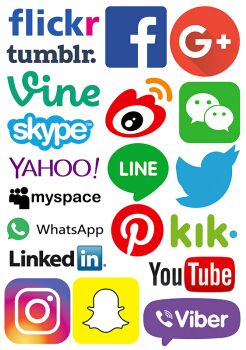1st: What is identity?
From the perspective of personality psychology, identity is the experience of the essential consistency and continuity of the self in time and space, and the observation and recognition of existence by others. The construction of identity is based not only on personal experience, but also on the perception and identity of the social environment.
Identity construction occurs in some aspects of the strategic planning shaping of society. Information is often selective, which defines specific differences between identity representations. Differences may exist only in the observer’s experience of the “social mirror,” but individuals, guided by specific intentions, may also present themselves in ways that deviate from their true selves.

2nd: Identity& Digital world
The dominant model of social reality is precisely through media content or according to W. J. T. Mitchell’s claim is established through “acting,” which refers to every representation, character, motive, or form that appears in some medium. These shows were of course created on several different levels, through different discourses, thus establishing the rhizoid structure of the Internet itself and all its users.
The growing difference between physical and virtual has the potential to contribute to better identity construction and development, but it also has the potential to become a space for fantasy and self-deception.
So the key word is “acting”, many people act on the Internet.
For example, on the Red book:


3rd: Construction of identity
The sensations of the body play an important role in the construction of identity. In this regard, selectivity also exists in the construction of identity in the digital world, manifested in the choice of self-visual representation. Both the choice of photographs and the overall “self-presentation” are self-censored, then selected in the digital space, and then constructed. The body in digital space is the most common ideal self-presentation.
The concept of identity also encompasses more possibilities, starting with personal preferences and continuing to the ideal image, which is revealed in the process of participation. The ideal image is usually a completely separate category that contains the principles of the ideal self. It is important to emphasize that the ideal self does not necessarily mean a false self, but it can present selected elements that are visible in the digital space, such as people, events, presentations, etc., while “unwanted content” is not published. This includes the number, type, and dynamics of personal information, posts, pictures, text, etc., shared by individuals through social networks. The selective representation of the self, the control of physical identity, the development of new mechanisms for identity management, and virtual social interaction are opening up a new process of identity creation that is different from non-virtual reality.
The Key word is “show what you want to show.”
Still taking some examples from the Red book:


Conclusion:
In summary, it can be concluded that participation in the digital space has a significant impact on the construction of identity and alters the experience of the self, first on a psychological level, by building a “bridge” from the real self to the ideal self through the preferred self, where the possibility of losing the real self and basic authenticity becomes a new risk. This is a particularly important issue for everyone. The content on the screen shapes the way we consume content, constantly changing the perception of external and internal, real and virtual scenes.

